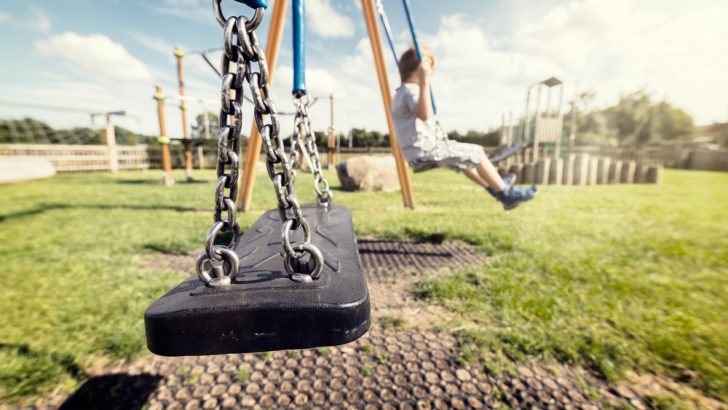A huge inquiry into child abuse at the hands of various institutions, both Church and secular, has been underway in Australia for some time now. It is taking place under the auspices of a body called the Royal Commission into Institutional Responses to Child Sexual Abuse. Despite the fact that it is investigating a range of institutions, disproportionate attention has been and is being paid to the Catholic Church.
When former Australian Prime Minister, Julia Gillard, announced the setting up of the commission in 2012, commentator Gerard Henderson said on the ABC (Australia’s RTÉ), that he supported the decision but he wondered how serious the Australian authorities really are about child sexual abuse given the lack of proper action to protect children from sexual abuse in Aboriginal communities.
Aboriginal leader Warren Mundine has condemned this lack of action to stop paedophilia in his community. The reason for the lack of action is the same one that led to the cover-up of sexual abuse by men of Pakistani origin in part of Britain; namely a politically correct fear of stirring up racism.
Complainants
The Commission has confirmed the horrendous scale of child sex abuse in the Catholic Church in Australia. It is the same pattern that has been found here and in Britain and in the US. It has found that between January 1950 and February 2015 – a 65-year period – 4,444 complainants made abuse allegations against the Catholic Church, relating to about 4,700 incidents.
The vast majority of claims refer to the period 1950 to 1989 with the 1970s being the worst decade of all, accounting for 29% of all abuse claims, which is about twice what you would expect if the abuse had taken place evenly over the six and a half decades the commission has looked at.
This is almost identical to what has been found here. The 1970s and 1980s were the worst period. In the US, the period 1975 to 1981 accounted for a wildly disproportionate number of abuse claims.
At 7%, the number of Australian priests and religious accused of abuse over the 65 year period is higher than the average elsewhere. The American figure is 4%.
What is also identical to other countries is that the vast majority of victims were boys (about 75%), and in the age range 10-14.
Finally, there was the same cover-up as elsewhere. Some priests were sent for therapy prior to being sent to a new parish without either the civil authorities or the new parish being told of the priest’s horrible crime.
As mentioned, other Churches have been investigated including the Anglican Church (the Australian equivalent of the Church of Ireland) and the Uniting Church. The Uniting Church formed in 1977 when the Presbyterian, Methodist and Congregational Churches amalgamated.
The commission surveyed 23 Anglican dioceses in Australia and found that “between January 1, 1980 and December 31, 2015”, a total of “1,085 complainants alleged incidents in child sexual abuse”.
The Anglican Church in Australia is about 60% of the size of the Catholic Church there, but even allowing for that, the figure of a little over 1,000 is proportionately far lower than the figure for the Catholic Church. It was not clear to me reading the report how many institutions such as orphanages the Anglican Church ran in Australia compared with the Catholic Church.
There are far fewer religious orders in the Anglican Church than in the Catholic Church and many cases of child abuse took place in religious-run Catholic institutions. Is this one reason why the Anglican figure is so much lower? (41% of child abuse claims received by the Catholic Church were received by Catholic male religious orders).
Or is it the case, as critics of the Catholic Church say, that certain Church teachings and practices are to blame such as the male-only nature of the priesthood, and the one that is most frequently blamed, namely celibacy? (The theory being that celibate men will become sexually repressed and some will end up taking out their frustrations on children.)
Experience
The experience of the Uniting Church comprehensively destroys this theory. The commission reports that a total of 2,504 allegations of child sex abuse were received by the Uniting Church between 1977 and 2015. The Uniting Church in Australia is a fifth the size of the Catholic Church in Australia which means that, proportionately speaking, the Uniting Church received twice as many allegations as the Catholic Church.
No constituent part of the Uniting Church has ever had clerical celibacy, nor is there any history of religious orders. For several decades, they have had female clergy. The Uniting Church is theologically very liberal.
So, none of the theories that apply specifically to the Catholic Church in order to explain child abuse apply to the Uniting Church. On the contrary.
The aforementioned Gerard Henderson (who is not a Catholic) drew attention to this fact in a paper recently and wondered why the commission spent 15 days wrapping up the evidence against the Catholic Church and only half a day wrapping up the evidence against the Uniting Church. Why indeed?
Henderson said the same overwhelming focus on the Catholic Church has prevailed in much of the Australian media, including in the ABC as well.
The commission has lately been explicitly targeting Catholic practices such as Confession, with it saying the Seal of Confession must be broken when child abuse is confessed.
Henderson writes: “The problem is that the Royal Commission may use a crime within the Catholic Church…to recommend clamping down on religious practices today. This would be a very unhealthy development in a democracy.”
That is certainly the case. And what helps this development along is an international media that focuses in a disproportionate way on the Catholic Church and erroneously blames certain Catholic practices for the huge moral and personal catastrophe that is child sexual abuse.


 David Quinn
David Quinn
